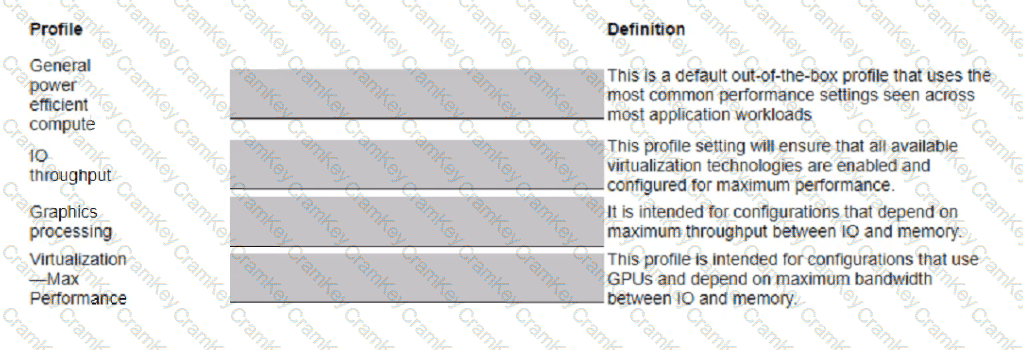| Exam Name: | HPE Hybrid Cloud Solutions | ||
| Exam Code: | HPE0-V25 Dumps | ||
| Vendor: | HP | Certification: | Hybrid Cloud |
| Questions: | 131 Q&A's | Shared By: | ana |
A customer has a large database stored on a DL380 server that is configured with a large RAID 6 set. What can the customer install that will directly improve the existing storage performance bottleneck?
Your customer has a ProLiant DL38O Genl 0 server. They have a health issue with one of the server's power supplies, and they want to download an Active Health System log on to create a support case.
How can they get the Active Health System Log? (Select two.)
Your customer wants an HPE Aruba core networking solution that is
- stackable
- provides 1/10/25/50GbE uplinks
- supports HPF Smart Rate to work with the existing Aruba WIFI network
Which HPE Aruba switching family meets these requirements?
Match the preconfigured HPE workload Profile With Its definition.
